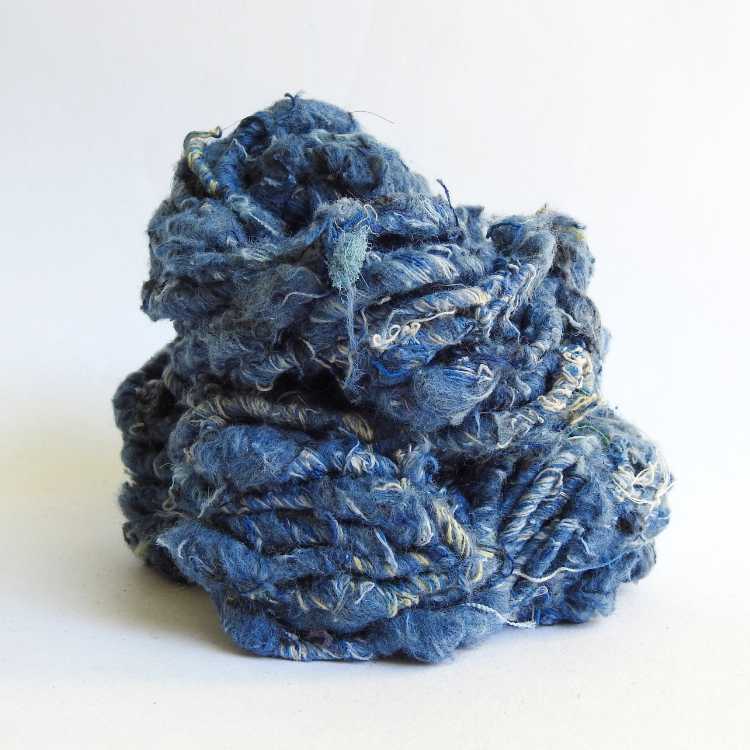Sustainability – The Challenge
The global conversation around sustainability is growing louder and louder by the day with an increasing urgency and recognition around the importance of recycling textiles as part of increasing sustainability.
It is estimated that in 2018, 17 million tons of textile solid waste was generated in the United States alone and ended its journey in landfill. It is a huge global challenge with only approximately 15% of textile waste currently being recycled. Over 100 billion garments are produced globally on an annual basis with most of this currently going to landfill where natural fibres may take years to decompose, whilst also releasing greenhouse methane and CO2 gases.
A number of well known clothing brands including The North Face and Patagonia, have launched initiatives to encourage customers to recycle or repair their clothing and organisations such as Oxam export clothing for reuse by countries in need.
The recycling of textiles to create yarn started in the eighteenth century during the Napoleonic War and continues to evolve and play an increasing role in improving our global sustainability.
HOW IS RECYCLED YARN MADE
Textiles for recycling and conversion back to yarn are sourced from either
- Pre-consumer waste – including scraps created from the manufacture of textiles (eg fabric, saris); or
- Post-consumer waste – including garments, household items, towels.
Pre-consumer waste produces the largest volume of textile waste whilst post-consumer waste tends to be more difficult and labour intensive to process due to the colour variations and fabric blends.
Commercially, textiles are often recycled by breaking down the fabrics into a form where they can be spun back out into new yarns. Textiles of natural fibres (eg cotton) are pulled apart into their separate fibres and cleaned and may then be blended and/or combed before being spun into a yarn that can be woven or knitted into fabric.
Recycled Yarn - The Benefits
Recycling textiles into yarn offers a number of benefits:
- Decreased landfill
- Reduced consumption of energy and water
- Avoids pollution
- Reduced use of virgin fibres
- Decreased demand for dyes
- Uniqueness – often recycled yarns are not redyed, utilizing the colours of the raw materials to craft a yarn where each ball is unique
- Our sustainability slowly improves.
ORA Loves Recycled Yarns
At ORA we are excited by the ever-increasing range of recycled yarns which are available and continue our exploration to bring our community of creatives the most beautiful and unique!
Our collection currently includes beautiful Yarns crafted from -
Cotton SarisStrips of recycled cotton saris are tightly wound to create soft cotton cords and twines of varying thicknesses and length.
Silk Saris
our soft, silky and chunky yarn crafted using the by-product of sari silk manufacture.
Linen
Artisans use repurpose the waste of textile manufacture to create this organic and textural Recycled Linen yarn. This yarn is handspun which introduces additional texture to this fabulous yarn.
Wool and Silk
Chunky and super soft, our Recycled Wool and Silk yarn is crafted from the remnants of traditionally made fabric. This yarn is also handspun lending your creations that extra stamp of uniqueness!

At ORA, most of our recycled yarns are crafted by developing communities in support of their livelihoods.
We love recycled yarn and the contribution that they make to improving our overall sustainability and for the fabulous texture and colours that they offer our creative community.
Browse our current collection of recycled yarns and sign up to our newsletter for updates on new recycled yarns
Take care,
Debbie x
References:
Wikkipedia: https://en.wikipedia.org/wiki/Textile_recycling
Love to Know: https://fashion-history.lovetoknow.com/fabrics-fibers/recycled-textiles
Browse Inspirations for further creative ideas
By inspired to create something beautiful! x








